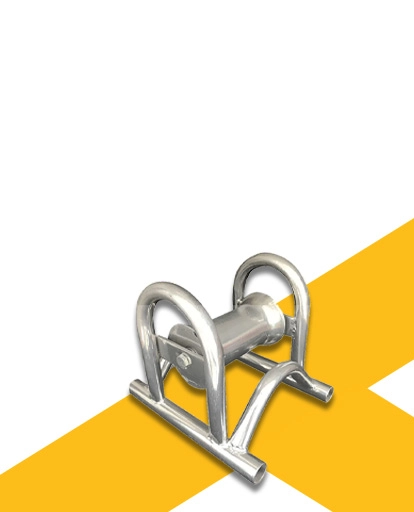
-
 Afrikaans
Afrikaans -
 Albanian
Albanian -
 Amharic
Amharic -
 Arabic
Arabic -
 Armenian
Armenian -
 Azerbaijani
Azerbaijani -
 Basque
Basque -
 Belarusian
Belarusian -
 Bengali
Bengali -
 Bosnian
Bosnian -
 Bulgarian
Bulgarian -
 Catalan
Catalan -
 Cebuano
Cebuano -
 Corsican
Corsican -
 Croatian
Croatian -
 Czech
Czech -
 Danish
Danish -
 Dutch
Dutch -
 English
English -
 Esperanto
Esperanto -
 Estonian
Estonian -
 Finnish
Finnish -
 French
French -
 Frisian
Frisian -
 Galician
Galician -
 Georgian
Georgian -
 German
German -
 Greek
Greek -
 Gujarati
Gujarati -
 Haitian Creole
Haitian Creole -
 hausa
hausa -
 hawaiian
hawaiian -
 Hebrew
Hebrew -
 Hindi
Hindi -
 Miao
Miao -
 Hungarian
Hungarian -
 Icelandic
Icelandic -
 igbo
igbo -
 Indonesian
Indonesian -
 irish
irish -
 Italian
Italian -
 Japanese
Japanese -
 Javanese
Javanese -
 Kannada
Kannada -
 kazakh
kazakh -
 Khmer
Khmer -
 Rwandese
Rwandese -
 Korean
Korean -
 Kurdish
Kurdish -
 Kyrgyz
Kyrgyz -
 Lao
Lao -
 Latin
Latin -
 Latvian
Latvian -
 Lithuanian
Lithuanian -
 Luxembourgish
Luxembourgish -
 Macedonian
Macedonian -
 Malgashi
Malgashi -
 Malay
Malay -
 Malayalam
Malayalam -
 Maltese
Maltese -
 Maori
Maori -
 Marathi
Marathi -
 Mongolian
Mongolian -
 Myanmar
Myanmar -
 Nepali
Nepali -
 Norwegian
Norwegian -
 Norwegian
Norwegian -
 Occitan
Occitan -
 Pashto
Pashto -
 Persian
Persian -
 Polish
Polish -
 Portuguese
Portuguese -
 Punjabi
Punjabi -
 Romanian
Romanian -
 Russian
Russian -
 Samoan
Samoan -
 Scottish Gaelic
Scottish Gaelic -
 Serbian
Serbian -
 Sesotho
Sesotho -
 Shona
Shona -
 Sindhi
Sindhi -
 Sinhala
Sinhala -
 Slovak
Slovak -
 Slovenian
Slovenian -
 Somali
Somali -
 Spanish
Spanish -
 Sundanese
Sundanese -
 Swahili
Swahili -
 Swedish
Swedish -
 Tagalog
Tagalog -
 Tajik
Tajik -
 Tamil
Tamil -
 Tatar
Tatar -
 Telugu
Telugu -
 Thai
Thai -
 Turkish
Turkish -
 Turkmen
Turkmen -
 Ukrainian
Ukrainian -
 Urdu
Urdu -
 Uighur
Uighur -
 Uzbek
Uzbek -
 Vietnamese
Vietnamese -
 Welsh
Welsh -
 Bantu
Bantu -
 Yiddish
Yiddish -
 Yoruba
Yoruba -
 Zulu
Zulu


Nov . 16, 2024 22:21 Back to list
push pull rod
Understanding Push-Pull Rod Mechanisms Applications and Importance
The push-pull rod mechanism is a fundamental engineering design that plays a crucial role in various applications, ranging from automotive systems to robotics and even heavy machinery. This mechanism operates on simple physical principles—translating linear motion into desired mechanical actions. In this article, we will explore the workings, applications, and significance of push-pull rods in modern technology.
At its core, a push-pull rod consists of a cylindrical rod that can be pushed or pulled along its axis. The functionality of this device comes from its ability to transmit force and motion when connected to other components. When one end of the rod is pushed, the opposite end moves in the same direction, creating a linear motion. Conversely, pulling one end will retract the opposite end. This simple yet effective mechanism is often employed in cases requiring precise control of linear movements.
Understanding Push-Pull Rod Mechanisms Applications and Importance
In robotics, push-pull rods are integral to actuating joints and limbs. Robotic arms, for example, may employ multiple push-pull rods to create intricate movements and mimic human actions. The ability to control these rods via electronic systems allows for finely-tuned motion control, which is essential for tasks such as assembly, painting, or even surgery. The efficiency of push-pull systems simplifies the design of robotic mechanisms, allowing them to be both lightweight and powerful.
push pull rod

Another noteworthy application of push-pull rods can be found in exercise equipment. Manufacturers utilize these mechanisms for resistance systems in machines like rowing machines, stationary bikes, and home gym setups. The push-pull action offers users a robust method to engage multiple muscle groups, providing an effective workout experience. The design also allows for a compact assembly, making the machines more space-efficient.
Moreover, push-pull rods contribute significantly to the field of automation. In automated processes, these rods can operate valves, gates, and other mechanisms that require a reliable means of motion control. For instance, in a manufacturing plant, push-pull rods may be employed to automate the assembly line by controlling the movement of conveyor belts or machinery. Their simplicity and reliability make them a preferred choice for many engineers and designers.
Despite their straightforward design, the effectiveness of push-pull rods benefits from various materials and engineering advancements. Innovations in materials such as carbon fiber and durable metals allow for lighter constructs that can withstand substantial loads without compromising performance. Additionally, advancements in automated systems have allowed for the integration of sensors and feedback mechanisms, enhancing the precision and control of these rods.
In conclusion, push-pull rods are vital components in a wide range of applications across various industries. Their ability to efficiently transfer linear motion allows for versatile use in automotive, robotics, exercise equipment, and automation systems. As technology continues to evolve, the importance and application of push-pull rods will likely grow, proving that sometimes the simplest mechanisms can have the most significant impact.
Latest news
What Are Construction Tools and How Are They Used?
NewsJul.11,2025
Professional-Grade Duct Rodding Tools for Superior Cable Installation
NewsJul.11,2025
Enhancing Safety and Efficiency with Modern Hot Stick Solutions
NewsJul.11,2025
Empowering Cable Installation with Advanced Rodder Solutions
NewsJul.11,2025
Elevate Your Cable Installation Projects with Cable Pulling Tools
NewsJul.11,2025
Efficient Cable Handling Solutions: Cable Rollers for Sale
NewsJul.11,2025











